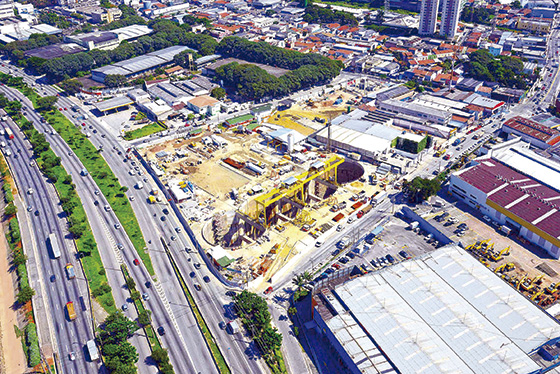On the road to Brasilândia

Line6 – Orangeof São Paulo subway will be completely built and operated by private companies through a PPP and will create a new axis of growth in the Northwestern area of the city
The region ofBrasilândiais known by two aspects. One of them is its urban violence caused by irregular occupation and lack of public investments in sanitation, housing, education.The other is its strong presence in the culture of the city, having as its icons theEscola de Samba Rosas de Ouro, one of the most traditional from São Paulo. The region is also the nest of hip-hop culture, that has in the graffiti, in the break (dance) and in the rap (music style) its tripod of sustentation. Born inBrasilândia, the singerNegra-Liis one of the strongest representatives of this trend.
The name of the district is a tribute toBrasílioSimões, trader who gathered the communityin 1944to build the church of Santo Antônio, replacing an old chapel. The origins of the district come from the beginning of the twentieth century, when some small plantations of sugar cane were developed and turned into small residential communities during the 30s. In the former years, this place near the Cantareira Hills was a refuge for escaped slaves.
Located in the Northern extreme of São Paulo, the region ofBrasilândiahad a disordered urban growth—increase of almost 100,000 residents during the last 30 years—having a current population of 250,000 inhabitants, more than many cities if the inland. Infrastructure improvement, however, did not follow the increase of the population. Currently, the district has the worst evaluation by the inhabitants of the Northern Zone, according to the DNA Paulistanoof theInstitutoDatafolha.
But some changes start to be seen in the region ofBrasilândia. The Municipality of São Paulo is installing linear parks and built theCentro Cultural e Educacional (CEU)ofJardimSanto Antônio. But the most important change will be caused by the arrival of theLine 6 – Orange, section São Joaquim - Brasilândia of the São Paulo subway, which will allow the access and the insertion of a community with more than200,000 persons and will be interconnected with other four high-population regions, inside and outside of the capital, such asFreguesia do Ó, Jaraguá, Pirituba, Cachoeirinhaand the municipality ofCaieiras (Metropolitan Area).
This section of Line 6 will be approximately 15.3 km long, including the access ways to the parking lot and maintenance yard of trains (located in the northern end of the designed line) and the maneuvering yards at the other end of the line. It will have an area for train parking and maintenance (Pátio Morro Grande), 17 ventilation wells, emergency exits located between stations, urban terminals and power substations.
The line starts in one of the neediest points of the city, which has few options of transport, and will reach important districts with hospitals, universities, business centers, malls. Called “University Line”, it will attend some of the main university buildings of the city, such as Unip, PUC, Armando AlvaresPenteado, FGV and FMU, and two important soccer stadiums: Allianz Park, fromSociedadeEsportivaPalmeiras, and Pacaembu Stadium.
The followingstationswillbebuilt: Brasilândia, Vila Cardoso, Itaberaba, João Paulo I, Freguesia do Ó, Santa Marina, Água Branca, Pompéia, Perdizes, PUC-Cardoso de Almeida, Angélica-Pacaembu, Higienópolis-Mackenzie, Praça 14-Bis, Bela Vista and São Joaquim. It crosses also some medium and high-class districts such asPompéia, Perdizes, Pacaembu andHigienópolis.

Av. Francisco Matarazzo, 404 Cj. 701/703 Água Branca - CEP 05001-000 São Paulo/SP
Telefone (11) 3662-4159
© Sobratema. A reprodução do conteúdo total ou parcial é autorizada, desde que citada a fonte. Política de privacidade













